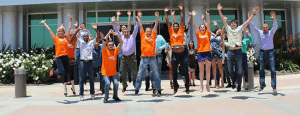A mother of three in Scotland had experienced dystonia symptoms since childhood, and these symptoms got progressively worse over the years.
Like so many with a rare condition it took years to get diagnosed.
Ultimately, it was her child’s pediatrician who compelled her to seek additional consultation with a neurologist. While still not cured, Nicola’s quality of life is much improved. Read more about her story here.
The movie Twisted is perhaps one of the most poignant portrayals of dystonia. Produced by blinddogfilms and available for viewing below.
Finding a cure for dystonia is a near global effort, although the disorder is not prevalent in all ethnic groups. It wasn’t until 2011 that a study was published describing the first description of an African–American family with primary dystonia (source). Not all cases of dystonia appear to have a genetic component, and while several gene’s have been identified with mutated alleles, it is clear that not everyone who inherits a mutated allele, even though most are inherited in a dominant pattern, will show symptoms. This is termed “reduced penetrance.”
There are many organizations in the US and Europe dedicated to finding a solution to this debilitating movement disorder: The Kurt B Seydow Dystonia Foundation, Bachmann–Strauss Dystonia & Parkinsons Foundation, Dystonia.org.uk, dystonia-europe.org and the new Asia-Pacific center for Neuromodulation in Brisbane. Just last week Dystonia Europe met in Hannover Germany. You can view their program here.
The Chicago-based Dystonia Medical Research Foundation has been active for the past 40 years bringing awareness to the disease and funding research. They can also help you find a support group, and connect with other families facing dystonia.
In August they will hold a family symposium in the Chicago area. Click here for detailed schedule and agenda. Everyone is welcome!







